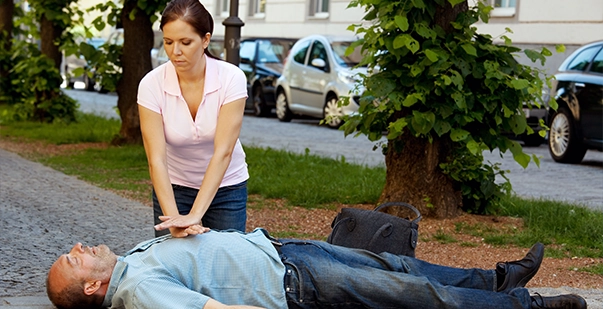
Last Updated On: January 15, 2025
Did you know that before the 1960’s an open heart massage was a common procedure? However with the advent of CPR, things changed. Now an external cardiac massage is a fundamental component of cardiopulmonary resuscitation (CPR). It is a life-saving technique employed during cardiac arrest. Most people mistake CPR for cardiac massage. However, they are not entirely the same. Here, you can empower yourself with the knowledge of cardiac massage and how it differs from CPR. Read on for more information on this topic.
Cardiac massage, or chest compressions, is a life-saving technique performed during cardiac arrest or when the heart stops beating. The goal is to manually compress the chest to help circulate blood throughout the body and save the vital organs until more advanced medical intervention, such as defibrillation, can be administered. It involves rhythmic chest compressions at a specific rate and depth to maintain blood flow and increase the chances of restoring a heartbeat. CPR is a critical skill for common people and healthcare professionals alike.
Cardiac massage and CPR (cardiopulmonary resuscitation) are terms often used interchangeably, but they refer to components of the same life-saving process. Here is a clarification between the two:
Cardiopulmonary Resuscitation (CPR): CPR is a broader term encompassing various life-saving emergency techniques. It typically includes chest compressions (cardiac massage), rescue breaths (mouth-to-mouth respiration), and, in some cases, an AED. CPR maintains blood circulation and oxygenation to vital organs until professional medical help arrives.
Cardiac Massage: Cardiac massage refers explicitly to the chest compression component of CPR. During cardiac massage, rhythmic compressions are applied to the chest to manually pump blood through the circulatory system. The focus is maintaining blood flow to prevent damage to vital organs, especially the brain. Some professionals also call it the heart massage, for better understanding.
Some key indications for performing cardiac massage techniques encompass the following situations:
Anyone trained in CPR should perform sternum massage. Bystanders witnessing a person in cardiac arrest should promptly initiate chest compressions. Healthcare professionals, first responders, and individuals with CPR training are well-equipped to administer this life-saving technique. Quick action is vital to maintaining blood circulation and increasing the chances of successful resuscitation. While professional medical assistance is crucial, bystanders’ immediate initiation of cardiac massage significantly improves the overall outcomes during cardiac emergencies. Only experienced surgeons should go for an internal cardiac massage. It requires expertise and precision from the healthcare professional.
Cardiac massage, also known as chest compressions or cardiopulmonary resuscitation (CPR), has two techniques:
Cardiac massage, or chest compressions, saves lives during cardiac arrest. Here’s how it works:
Read More: How to Stay Calm & Focused During CPR Emergencies
Understanding cardiac massage and its role within CPR can empower individuals to act swiftly and effectively during cardiac emergencies. Whether through hands-only CPR or conventional methods, cardiac massage ensures blood circulation, buys time for professional help, and significantly increases survival chances. Enrolling in online CPR training allows you to learn and practice these life-saving techniques conveniently, equipping you to make a critical difference when it matters most.
Read More: